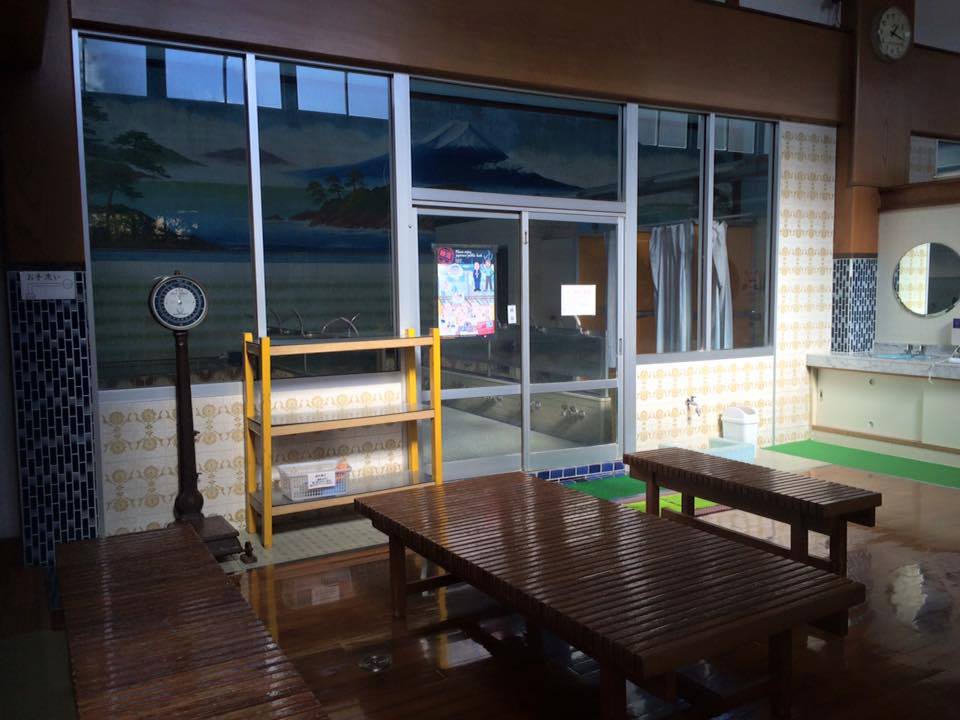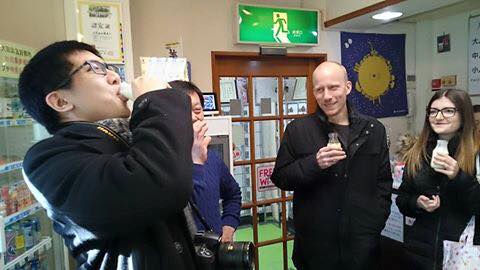In January, our students went on a Special Sentô Tour to discover the wonders of the traditional Japanese public baths and their artworks. The communal baths appeared in Japanese temple during Nara Era (710) but it is around the 13th century that commercial bathhouses opened across the country. The Showa Era (1926 – 1989) was the golden age of sentô and more than 2000 existed in Tokyo. Nowadays, with only 600 sentô left in the capital of Japan, this traditional culture is on declined.

The word sentô, “銭湯” takes its origin in the coin of 100 yen you paid to enter and take a hot bath. Read “sen”, this old kanji “銭” means one coin of 100 and “tou”, “湯”, means hot water.
Having a sentô is often a family business. The two sentô our students visited in the district of Ota belong to the third generations of owners, who explained that from their childhood, the public baths was their everyday life.
And the everyday life of a sentô owner is not an easy one. Waking up at 10:00 they have to start the boiler for the water of the baths to get hot. It takes at least 2 hours. Students discovered that nowadays, boilers use gas but originally, it was burning wood. They would use the wood of a demolished house.
During that time, they take care of their homes and prepare their meals. A sentô will open between 12:00 and 14:00 depending on the area. The owners will stay at the front, giving towels and taking care of the clients during business hours, taking a short break to eat a quick dinner. The public baths are opened until the dark of the night, sometimes even 3:00 in the morning! Once they closed the doors, they have to clean the rooms and baths and it takes from 1 hour to 1 hour and a half. After that they will finally go to bed… but not before enjoying a quick hot bath! One of the owners who introduced his life to our students, told that he barely sleeps 3 hours per night and has done this job for 30 years.
The sentô is an important part of Japanese culture and community. Or at least, it was, before the introduction of bathrooms in Japanese homes. Japanese people would gather to not only take a shower, but also to meet, to have discussions and even to do business while resting in the steam of the baths at 45°C! The hot waters are sometimes from natural sources and very healthy for the body and the skin.

One other benefit of the sentô is to lower the risk of accident due to the temperature difference between the hot bath and the room. Japanese homes are known to be quite cold and every year, thousands of Japanese experience tragic accidents as they get out of a very hot bathroom to a too cold bedroom or living room.
The traditional sentô is still a very important place for old Japanese people who will gladly spend a few hours chatting with their friends in the lounge area. After the bath, it is recommended to drink something in order to rehydrate your body. Very often, they will drink milk or some sweet drinks.
The price is fixed by the prefecture and in Tokyo, it is nowadays 460 yens the entrance. Usually, a sentô will provide with soap & shampoo and rent towel. If you need a quick shower, but cannot get to your home, the sentô is the perfect place for you! A fun fact to know is that close to every sentô will always be a coin laundry. The difference with the usual one is that they wash with natural water!
We recommend you to try during your stay in Japan!


